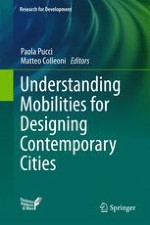2016 | OriginalPaper | Chapter
Resident and Non-resident Populations: Types of Conflicts
Author : Giampaolo Nuvolati
Published in: Understanding Mobilities for Designing Contemporary Cities
Publisher: Springer International Publishing
Activate our intelligent search to find suitable subject content or patents.
Select sections of text to find matching patents with Artificial Intelligence. powered by
Select sections of text to find additional relevant content using AI-assisted search. powered by
